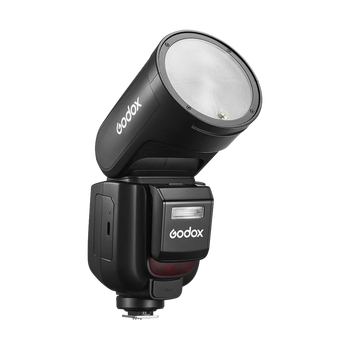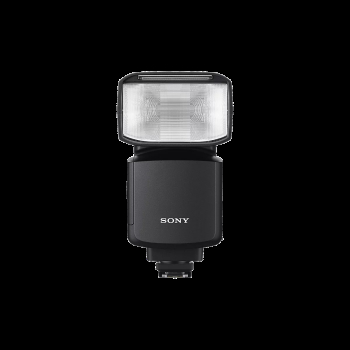- Excellent light distribution
- Quick attachment of modifiers
- Long battery life
- High guide number
- Advanced TTL features
- Durable build
- Higher price point
- Slightly heavier
- Requires AA batteries
- Higher price
Godox V1-C vs Sony HVL-F60RM2
When it comes to camera flashes, photographers have a plethora of options to choose from, each with its unique features, benefits, and drawbacks. In this comparison, we'll be pitting two popular models against each other: the Godox V1-C and the Sony HVL-F60RM2. Both of these camera flashes are designed to provide high-quality lighting for various photography applications, but they differ significantly in terms of their specifications, functionality, and compatibility.
Godox V1-C
The Godox V1-C is a compact and versatile camera flash that's compatible with Canon cameras. It features a guide number of 76 (at ISO 100) and has a zoom range of 24-200mm, making it suitable for a wide range of photography applications, from portraits to landscapes. The V1-C also boasts a high-speed sync mode, allowing for faster shutter speeds and more creative control over lighting.
One of the standout features of the Godox V1-C is its affordability. Priced significantly lower than many other camera flashes on the market, it's an attractive option for photographers on a budget or those just starting to build their lighting kit. Additionally, the V1-C has a user-friendly interface and is relatively lightweight, making it easy to carry around and use on location.
Sony HVL-F60RM2
The Sony HVL-F60RM2, on the other hand, is a high-end camera flash designed specifically for Sony cameras. With a guide number of 60 (at ISO 100) and a zoom range of 24-200mm, it's well-suited for a variety of photography applications, including weddings, portraits, and events. The HVL-F60RM2 also features a built-in radio transmitter, allowing for wireless control over other Sony flashes and making it an excellent choice for photographers who need to work with multiple lights.
One of the key advantages of the Sony HVL-F60RM2 is its integration with Sony's proprietary flash system. This means that users can take advantage of advanced features like wireless TTL control, high-speed sync, and automatic exposure compensation. The HVL-F60RM2 also has a more robust build quality than the Godox V1-C, with a metal housing and a more comprehensive set of controls.
Comparison
So, how do these two camera flashes stack up against each other? Here are a few key differences to consider:
- Price: The Godox V1-C is significantly cheaper than the Sony HVL-F60RM2, making it a more affordable option for photographers on a budget.
- Compatibility: The Godox V1-C is designed for Canon cameras, while the Sony HVL-F60RM2 is specifically designed for Sony cameras. If you're already invested in one of these ecosystems, it may make sense to choose the corresponding flash.
- Features: The Sony HVL-F60RM2 has a more advanced feature set, including wireless TTL control and high-speed sync. However, the Godox V1-C still offers many of the features that photographers need, including manual and TTL modes.
- Build quality: The Sony HVL-F60RM2 has a more robust build quality than the Godox V1-C, with a metal housing and more comprehensive controls.
Conclusion
Ultimately, the choice between the Godox V1-C and the Sony HVL-F60RM2 will depend on your specific needs and preferences as a photographer. If you're looking for an affordable, no-frills camera flash that's compatible with Canon cameras, the Godox V1-C may be the way to go. However, if you're invested in the Sony ecosystem and need a high-end flash with advanced features and wireless control, the HVL-F60RM2 is definitely worth considering.
In the world of camera flashes, there are many options to choose from, each with its own strengths and weaknesses. By carefully evaluating your needs and doing your research, you can find the perfect flash to help take your photography to the next level.































